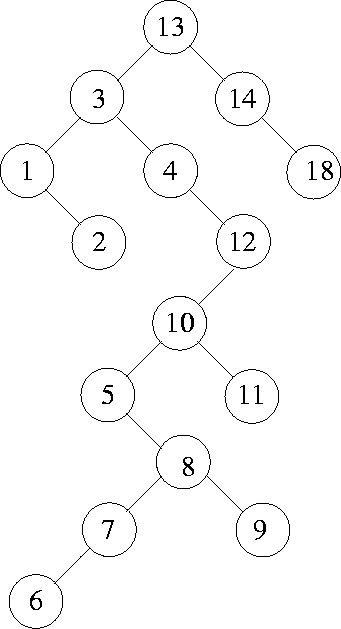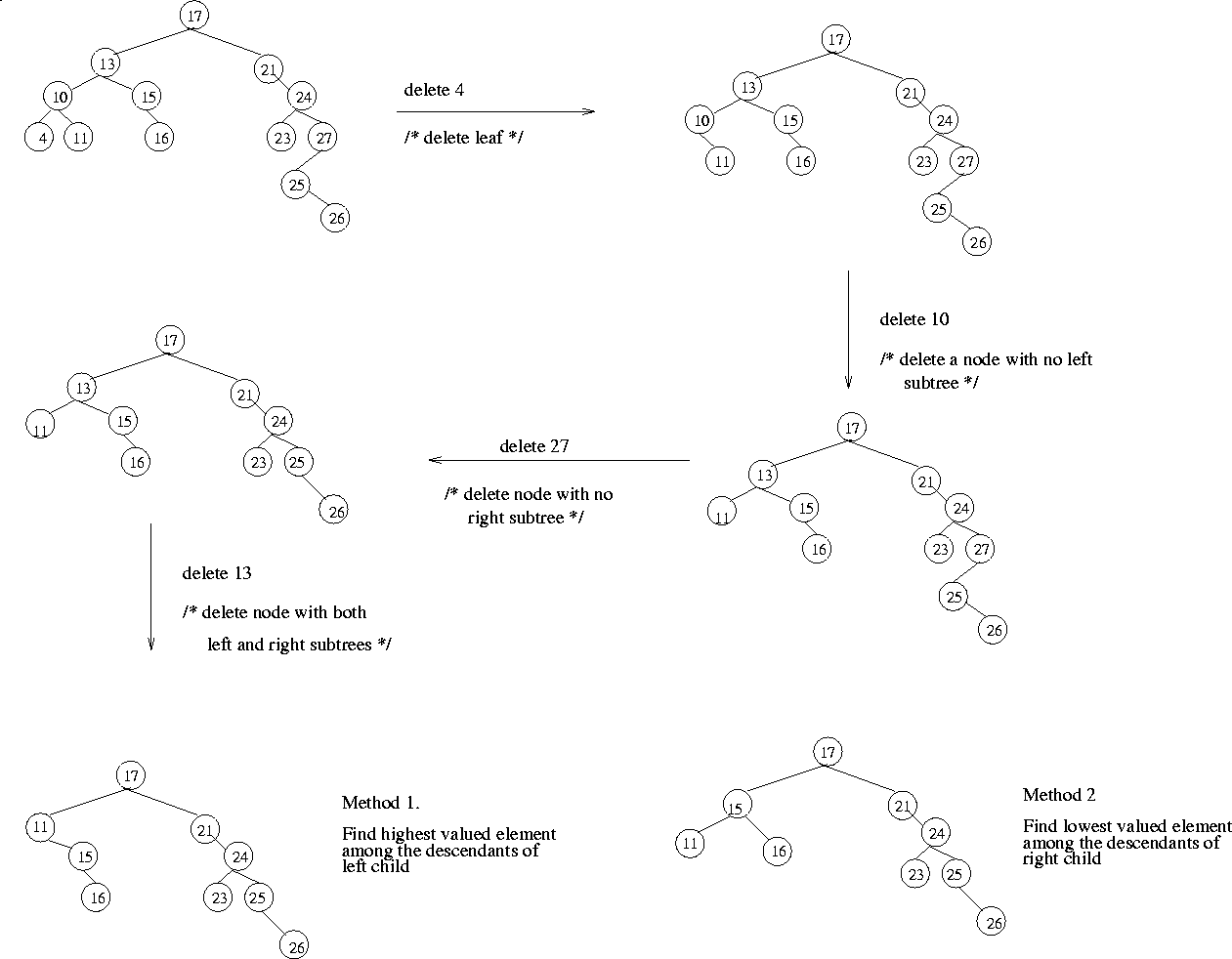


Next: 4.4.1 Average Case Analysis of BST Operations
Up: 4. Binary Trees
Previous: 4.3.2 Sketch of Huffman Tree Construction
- A prominent data structure used in many systems programming
applications for representing and managing dynamic sets.
- Average case complexity of Search, Insert, and Delete
Operations is O(log n), where n is the number of nodes in the tree.
- DEF:
A binary tree in which the nodes are labeled with elements of an
ordered dynamic set and the following BST property is satisfied:
all elements stored in the left subtree of any node x are less
than the element stored at x and all elements stored in the right
subtree of x are greater than the element at x.
- An Example:
Figure 4.14 shows a binary search tree. Notice that
this tree is obtained by
inserting the values 13, 3, 4, 12, 14, 10, 5, 1, 8, 2, 7, 9, 11, 6, 18
in that order, starting from an empty tree.
- Note that inorder traversal of a binary search tree
always gives a sorted sequence of the values. This is a direct
consequence of the BST property. This provides a way of sorting
a given sequence of keys: first, create a BST with these keys and then
do an inorder traversal of the BST so created.
- Note that the highest valued element in a BST can be found by
traversing from the root in the right direction all along until a
node with no right link is found (we can call that the rightmost
element in the BST).
- The lowest valued element in a BST can be found by
traversing from the root in the left direction all along until a
node with no left link is found (we can call that the leftmost
element in the BST).
- Search is straightforward in a BST. Start with the root
and keep moving left or right using the BST property. If the key we are
seeking is present, this search procedure will lead us to the key.
If the key is not present, we end up in a null link.
- Insertion in a BST is also a straightforward operation.
If we need to insert an element x, we first search for x. If x is present,
there is nothing to do. If x is not present, then our search procedure ends
in a null link. It is at this position of this null link that x will be
included.
- If we repeatedly insert a sorted sequence of values to form
a BST, we obtain a completely skewed BST. The height of such a tree is
n - 1 if the tree has n nodes. Thus, the worst case complexity of
searching or inserting an element into a BST having n nodes is O(n).
Figure 4.14:
An example of a binary search tree
 |
Deletion in BST
Let x be a value to be deleted from the BST and let X denote the
node containing the value x.
Deletion of an element in a BST again uses the BST property in a critical
way. When we delete the node X containing x, it would create a "void" that
should be filled by a suitable existing node of the BST. There are
two possible candidate nodes that can fill this void, in a way that the
BST property is not violated: (1). Node containing highest valued element
among all descendants of left child of X. (2).
Node containing the lowest valued element among all the descendants of the
right child of X. In case (1), the selected node will necessarily
have a null right link which can be conveniently used in patching up the
tree. In case (2), the selected node will necessarily have a null left link
which can be used in patching up the tree.
Figure 4.15 illustrates several scenarios for deletion in BSTs.
Figure 4.15:
Deletion in binary search trees: An example
 |



Next: 4.4.1 Average Case Analysis of BST Operations
Up: 4. Binary Trees
Previous: 4.3.2 Sketch of Huffman Tree Construction
eEL,CSA_Dept,IISc,Bangalore